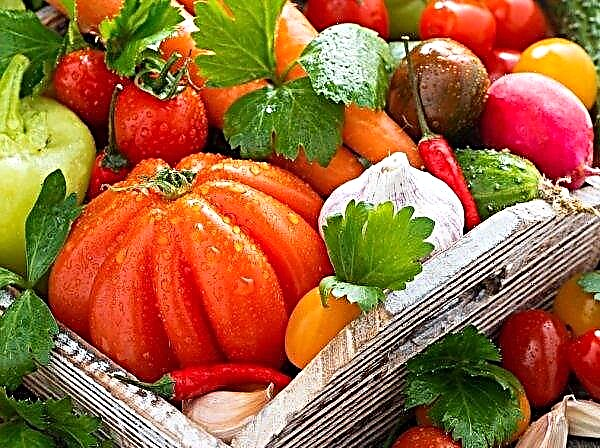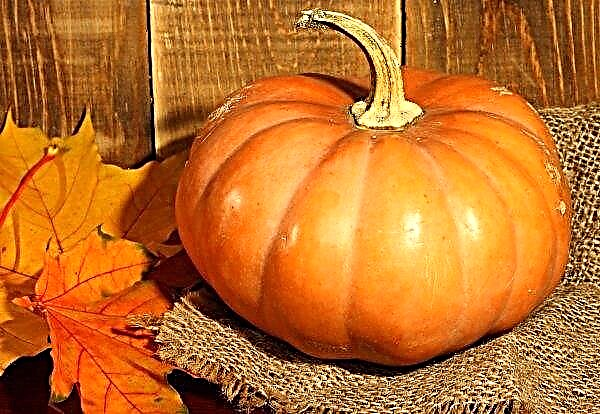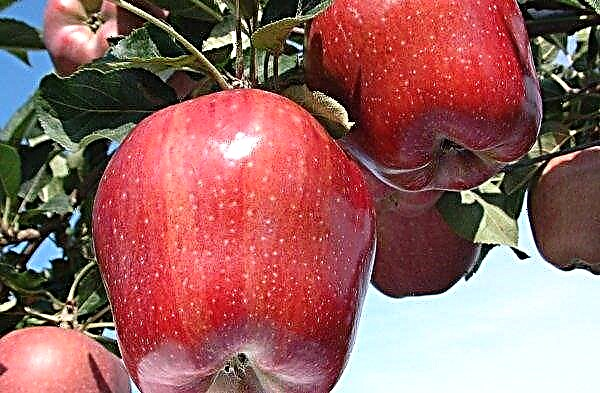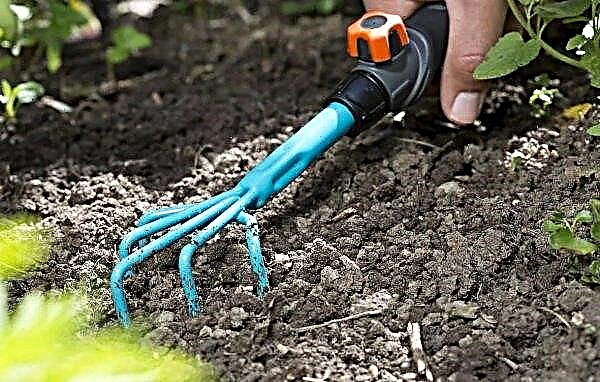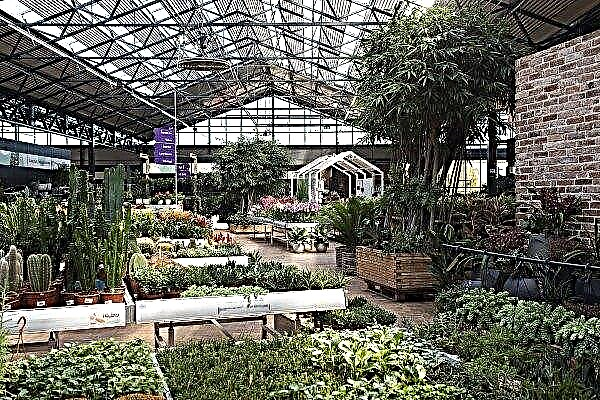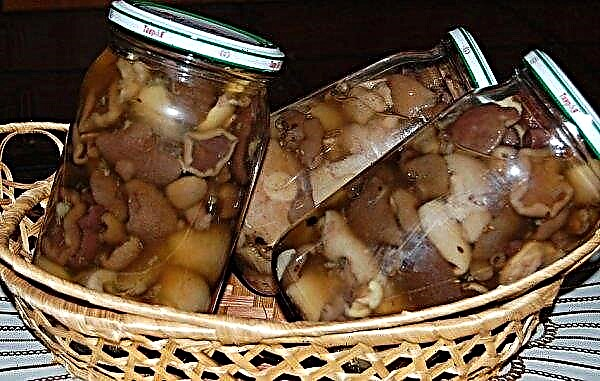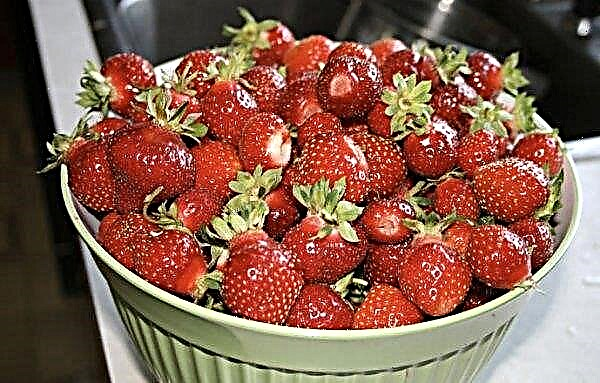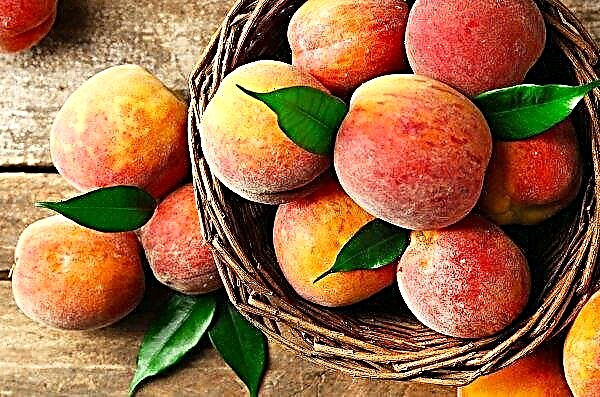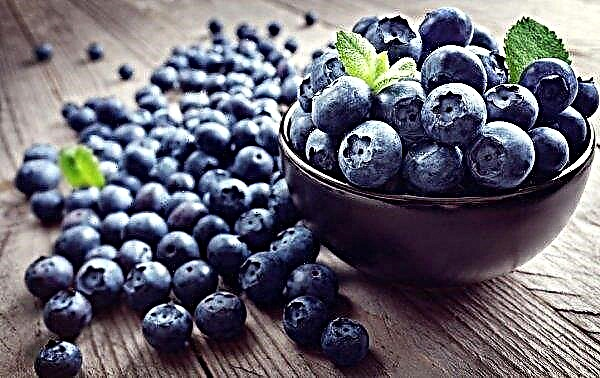Lamb chickpea, or Turkish peas, is a leguminous crop belonging to the legume family. Plant seed is a food product that has not only high nutritional value, but also medicinal properties. For more information on the classification, varieties, and properties of this variety of beans, read below.
Popular varieties: origin and features
In the Middle East, this variety began to be cultivated about 7,500 years ago. In Rome and Greece, it has been known since the Bronze Age. In these territories several varieties were cultivated at once, they used pulse (porridge) for cooking dishes.
In antiquity, this type of bean was associated with Venus, it was believed that it is involved in sperm formation in men, and stimulates lactation in women. Scientists of that time noted that its seeds do not stimulate gas formation in the intestine, as occurs with the consumption of ordinary peas.
Did you know? In 1793, they started making coffee drink from chickpeas, which later became part of the mandatory menu of German soldiers during the First World War.
At the moment, the plant is common in West and Central Asia, North Africa and America. The product has been widely used in vegetarian, Indian, oriental cuisines. The fried bean of this variety is called Lebley. Also from this type of legumes produce chickpea flour. Plant tops are used for feeding livestock. White seed varieties go to human food to a greater extent.

The most popular varieties of chickpeas:
- Krasnokutsky or Krasnodar;
- Volzhanin or Volgograd;
- Iranian or Israeli;
- Anniversary;
- Bujak;
- State Farm.
All varieties of peas in question have certain common features.
General description and botanical features:
- annual herbaceous plants with an upright stalk, 20–70 cm high;
- stems are covered with glandular hairs, dense, fleshy, painted green;
- leaves are pinnate;
- plants are pollinated independently - it occurs in closed buds, less often cross-pollinated specimens are found;
- seeds are located in short swollen beans in the amount of 1–4 pcs.;
- peas have the shape of the head of a ram or owl, with a diameter of 0.5-1.5 cm;
- the surface of the seeds has a rough structure;
- the weight of 1,000 grains ranges from 150–300 g;
- the vegetation period takes 90–220 days, depending on the variety;
- all varieties are heat-loving, seed germination begins at +3 ... + 5 ° C, and for entering the flowering phase, the temperature regime should be in the range +24 ... + 28 ° C;
- plants are demanding for lighting, are cultures of long daylight hours;
- extremely resistant to pests;
- with prolonged rainy periods, they can be affected by fusarium, ascochitosis, and also enter the flowering phase late.
Krasnokutsky
The bushes are low, branched from above, 30–40 cm high. Stems are erect. White flowers are located on shortened peduncles. Fruits ripen in 90–115 days. Each bean contains 2 yellow-pink seeds. The surface of the grains is wrinkled. The mass of 1,000 seeds is 250 g. The yield per 10 m² is 2.6–3.5 kg. The variety is highly resistant to drought, disease and pests.
 Krasnokutsky chickpea contains the largest amount of protein compounds in comparison with other varieties - 30%.
Krasnokutsky chickpea contains the largest amount of protein compounds in comparison with other varieties - 30%.
Volzhanin
Erect compact bushes, 35–70 cm high. The leaves are oval. Largest in size, like flowers. Beans are round or slightly angular, with a complete lack of ribbing, painted yellow. Vegetation takes 71–101 days.
The selection of this variety was aimed at obtaining a coarse-grained specimen, for which varieties with a weight of 1,000 seeds in 420 g were involved in the work. As a result, plants with yield up to 10 kg with 10 m² and weighing 1,000 seeds in 356 g.
Relative to drought resistance, Volzhanin is characterized by lower resistance than other varieties. Over the years of passing state tests, no injuries by diseases and pests were noted. Roughly recently bred pea chickpea Bonus possesses approximately such characteristics.

Iranian
Suitable for cultivation in arid conditions. The bushes are compact, erect, up to 55 cm high. In post-Soviet countries such as Ukraine, Russia, Poland, the yield reaches 28 centners per ha, the weight of 1,000 seeds is about 400 g.
The culture is characterized by high resistance to lodging, which allows you to remove it with the help of a combine. In addition, it has a high resistance to diseases and pests. In terms of use, it is universal, equally well suited for human and animal consumption. Differs in high ability of seeds to germination - 96%.
Did you know? George Lucas, who directed the movie Star Wars, gave one of the characters the name Nut, because he is a vegetarian and loves Turkish peas.
Anniversary
Plants are low, up to 45 cm, upright. Blossom in white. The flowers themselves are located on shortened peduncles. Seeds, as in the previous variety, are colored yellow-pink, have a wrinkled surface structure, are located in thick short beans of 2 pcs.
Vegetation from planting to ripening takes 90-100 days. The weight of 1,000 fruits is 250–300 g, and the yield from 10 m² is 1.5–3 kg. The specimen in question exhibits relative resistance to diseases and pests, tolerates drought well, seeds are not prone to cracking.

Bujak
It is a tall bush - about 60–65 cm. Plants are erect, strongly branched, with large wide leafy plates. Flowers also differ in larger sizes than other varieties. They are located on short, thick pedicels.
Beige beans contain 1-2 seeds. The specimen in question belongs to the premature maturity. The vegetation period of plants is only 80 days. The weight of 1,000 grains is 420 g, the yield per 10 m² is 1.8–2 kg. Plants are extremely resistant to ascochitosis, fusarium, and tolerate drought.

State farm
The bushes are compact, low - up to 30 cm. The flowers are painted white, located singly on short pedicels. Beans are colored brown, angular, contain 2 seeds. The vegetation period is 100–110 days.
The average weight of 1,000 seeds is 280 g, the yield is unstable - from 10 m² you can collect from 1.5 to 3.8 kg of raw materials. The specimen perfectly tolerates the negative impact of the external environment in the form of drought and increased humidity. Resistant to ascochitosis, cracking of seeds.
Groups
Allocate 3 groups of peas of the considered variety:
- South European;
- Mid-European;
- Anatolian.
They differ in appearance - mainly the dimensions of plants.
South european
The largest representatives of varieties of chickpeas belong to this group. The plants themselves are branched, erect, powerful. The largest number of branches is located in the upper part of the bush. The flowers are white, small. The lowest peduncles are located at a height of 20 cm from the soil level.
 Their height reaches 70 cm.
Their height reaches 70 cm.
Mid european
Shrubs are smaller than specimens from the previous group. Regarding branching forces, the South European and Mid-European groups are similar. The examined specimens also exhibit stronger branching in the upper part of the bush.
 Their height reaches 45 cm.
Their height reaches 45 cm.
Anatolian
Bushes reach a height of only 25 cm. Only the upper part branches.
Species classification
The species classification distinguishes several varieties of chickpeas, differing in the color of the seeds:
- brown;
- yellow;
- red;
- white;
- the black.
Brown
It is an annual compact bushes, compressed form. Plants are resistant to dry winds and drought, with a height of 45 to 70 cm. The flowers are red-violet in color. The seeds are reddish brown. 1-2 pieces are located. in beans of an angular shape. They have high nutritional value. The weight of 1,000 seeds is 340 g. The growing season is 90–100 days. The fruits are actively used in the production of chickpea flour.

Yellow
Medium-sized specimens are characterized by strong branching and early ripening. Vegetation takes about 80–90 days. Seeds, located in beans of 2 pcs., Are painted in a light beige color. All varieties of this species are resistant to lodging, diseases of such a plan as root rot, etc. of fungal origin, as well as drought, dry winds. Fruits are great for preparing side dishes, boiling, frying.

Red
The fruits of this variety are painted in a reddish color. By botanical characteristics, they are similar to other varieties. Also have a powerful structure of compact bushes. They can tolerate adverse weather conditions in the form of drought and increased soil moisture. Rarely affected by diseases and pests.

White
Plants are low up to 45 cm. They have powerful shoots. Peduncles are located at a distance of 20 cm from the soil level, which is very convenient when harvesting, and facilitates the cultivation of crops, because it does not require pinching and removing lower stems with high soil moisture. The specimens under consideration are particularly resistant to diseases, pests and negative environmental conditions. Fruits form in beans. Painted in white.

The black
The botanical characteristics of the plant are similar to the varieties described above. The difference is that the fruits are painted in a rich dark shade. They also have a more pronounced taste and bright spicy aroma.

Calorie content
Nutritional value per 100 g of the considered product in dried form:
| Calories | 364 kcal |
| Squirrels3 | 19-30 g |
| Fats5 | 6 g |
| Carbohydrates7 | 61 g |
Nutrition value per 100 g of boiled products:
| Calories | 127 kcal |
| Squirrels | 8.3 g |
| Fats | 1.9 g |
| Carbohydrates | 19.3 g |
Important! The beneficial substances that are contained in chickpeas are completely preserved even after heat treatment.
Useful and harmful properties
Chickpea seeds are highly valuable due to the high content of dietary fiber, as well as a number of vitamins and minerals necessary for the normal functioning of the human body. By its nutritional value, these products are close to meat products.

- When consuming chickpeas observed:
- metabolic acceleration;
- improvement of metabolic processes;
- improving the quality of seminal fluid in men;
- stimulation of immune processes;
- acceleration of cholesterol excretion;
- stimulation of digestion and redox reactions in the body;
- increased tissue regeneration at the cellular level.
Protein compounds have a positive effect on the functioning of the cardiovascular system, as well as nerve centers. In addition, due to the large number of antioxidant compounds, the appearance and elasticity of the skin are improved. Only 100 g of chickpeas per day can provide the body with a daily norm of essential amino acids and restore energy balance after heavy physical exertion.
Like any other product, chickpeas seeds in large quantities and with certain deviations in the functionality of the human body can have a harmful effect. First of all, you need to be more careful with the consumption of this product for those who suffer from gastrointestinal dysfunctions. Seeds can cause heaviness in the stomach, flatulence, pain.

- Chickpea consumption is completely contraindicated in:
- gout
- acute cystitis;
- digestive upset;
- thrombophlebitis;
- peptic ulcer diseases;
- individual intolerance.
Important! In the presence of various stomach problems that are in remission, chickpeas can be consumed in an amount of 50 g / day, but subject to their preliminary soaking in water for 2-3 hours.
Application
The products in question are mainly used in cooking and traditional medicine. In addition, the fruits and tops of plants are excellent raw materials for feeding pigs, sheep, horses and rabbits.
Cookery
The taste of chickpeas is much higher than that of ordinary peas. After cooking, its taste resembles mashed potatoes with a pronounced nutty aftertaste and aroma.

The product is used to prepare:
- Uzbek pilaf with lamb;
- stew in coconut milk with beef;
- Mexican salad with herbs and mint;
- soup in combination with coriander and chili;
- cereals, pasta, flour products;
- Hummus
- couscous with cod, etc.
Ethnoscience
In folk medicine, chickpea seeds are used to treat:
- reproductive system dysfunction in men;
- restoration of immune processes in women;
- acne and various skin problems;
- obesity, accompanied by an increase in cholesterol;
- problems with the cardiovascular system, accompanied by swelling;
- and prevention of constipation.
Chickpeas are superior in quality to ordinary peas. It has a high nutritional value, and in terms of its protein component it is equivalent to some types of meat. The plants themselves are characterized by high resistance to heat, disease, pests and high humidity, which allows them to be cultivated in a variety of climatic zones.


